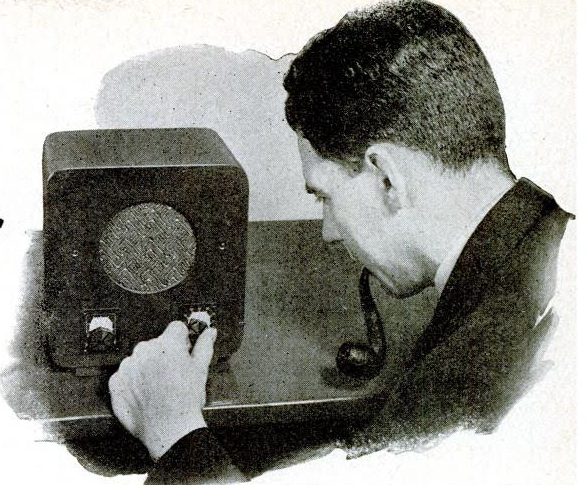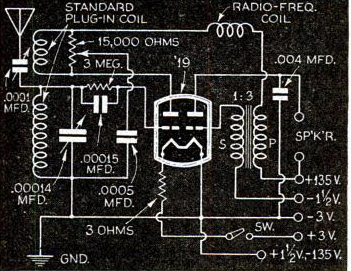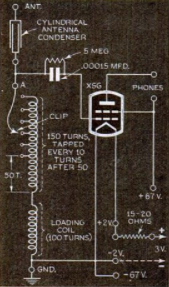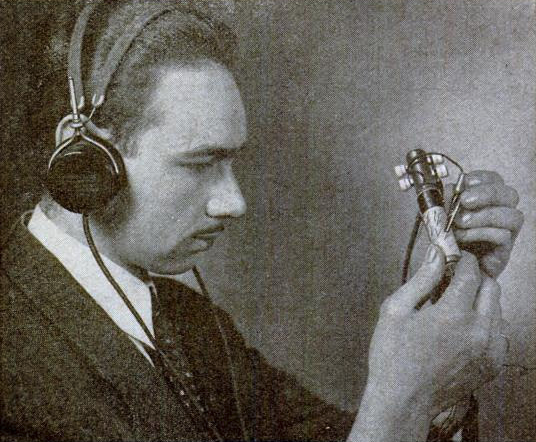 Eighty years ago this month, the April 1938 issue of Popular Science carried the plans for two interesting one tube receivers, the first of which is shown above. This set was billed as being ideal for an auxiliary set in the kitchen, den, or child’s playroom, and would give good loudspeaker reception on local stations with an efficient antenna.
Eighty years ago this month, the April 1938 issue of Popular Science carried the plans for two interesting one tube receivers, the first of which is shown above. This set was billed as being ideal for an auxiliary set in the kitchen, den, or child’s playroom, and would give good loudspeaker reception on local stations with an efficient antenna.
 While the article pointed out that it might not have been the first ever one tube loudspeaker set, it was “perhaps the first time that those results have been achieved without incorporating complicated and tricky hook-ups in the design.”
While the article pointed out that it might not have been the first ever one tube loudspeaker set, it was “perhaps the first time that those results have been achieved without incorporating complicated and tricky hook-ups in the design.”
The set accomplished this by using a new dual tube that had been on the market for a few months, the type 19. The circuit used half of the dual triode as a regenerative detector, with the other half amplifying the audio enough to drive the speaker. The set was built in a homemade wooden cabinet.
 The other set featured in the magazine was more of a novelty, a vest pocket set about the size of a pocket flashlight, shown above. This one-tube set was said to give excellent earphone volume on stations within 75 miles, allowing it to be a handy radio companion for the hiker or cyclist. The filaments were powered by flashlight batteries, with a small 45 volt battery supplying the B+. It used a type XSG “ultra-midget” tube nestled carefully inside the fountain pen case.
The other set featured in the magazine was more of a novelty, a vest pocket set about the size of a pocket flashlight, shown above. This one-tube set was said to give excellent earphone volume on stations within 75 miles, allowing it to be a handy radio companion for the hiker or cyclist. The filaments were powered by flashlight batteries, with a small 45 volt battery supplying the B+. It used a type XSG “ultra-midget” tube nestled carefully inside the fountain pen case.

